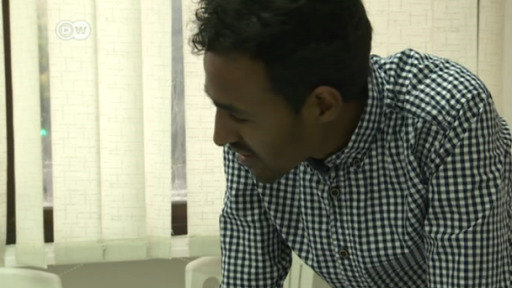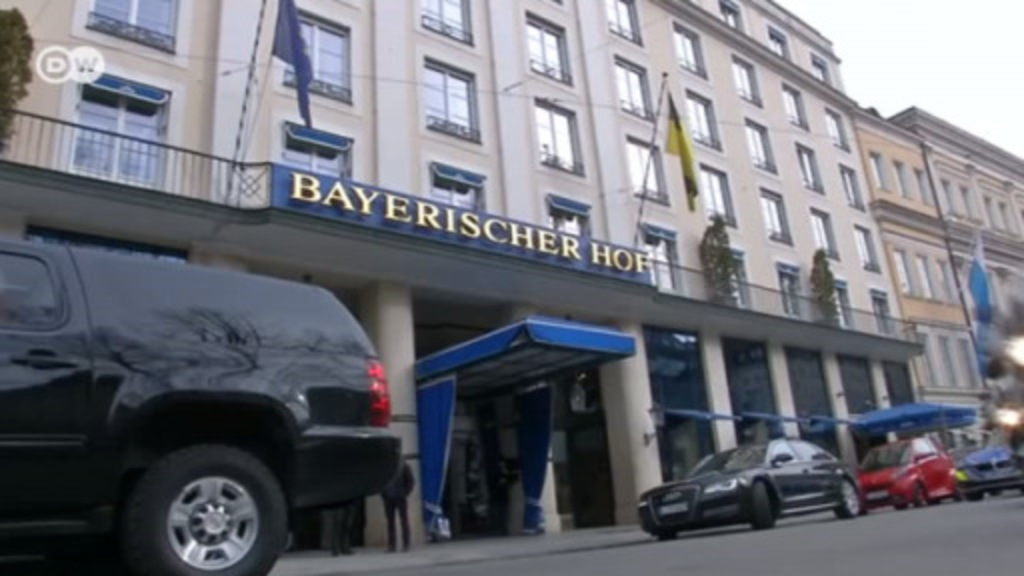Israeli Prime Minister Benjamin Netanyahu has announced an unspecified international deal to expel some 40,000 African asylum seekers from the country. The Israeli Cabinet also voted to shut down a migration center.
The Israeli prime minister said Sunday he had reached an "international agreement" that allowed his country to deport around 40,000 African refugees.
The asylum seekers, mainly from Sudan and Eritrea, entered Israel through Egypt's Sinai Peninsula in the early and mid-2000s.
Prime Minister Benjamin Netanyahu's Cabinet also approved plans to shut down the Holot migrant detention center in southern Israel and gave asylum seekers a three-month deadline to leave the country or face deportation.
Activists say that refugees from Sudan and Eritrea cannot return to their "dangerous" homelands
The Israeli government says the African migrants are "infiltrators" and not genuine refugees.
"The infiltrators will have the option to be imprisoned or leave the country," Israel's Public Security Ministry said in a statement.
"This removal is enabled thanks to an international agreement I achieved that enables us to remove the 40,000 remaining infiltrators without their consent. This is very important," Netanyahu said at the start of his Cabinet meeting.
"This will enable us to close down Holot and allocate some of the large funds going there to inspectors and removing more people," the prime minister added.
Read more:
Move slammed
It is unclear whether the African asylum seekers would be sent back to their homelands or a third country.
In a Twitter statement, Gilad Erdan, Israel's public security minister, said the Holot closure was conditioned on "us seeing that the policy of removing infiltrators to a third country was indeed taking place."
Neither Erdan nor Netanyahu provided details about the third country.
Activists say that refugees from Sudan and Eritrea cannot return to their "dangerous" homelands.
"Instead of turning away refugees within its territory, Israel can and should protect asylum seekers like other countries of the world, instead of imprisoning them or deporting them to continue the journey as refugees," a coalition of human rights organizations in Israel said.
-
WORLD REFUGEE DAY: ICONIC IMAGES OF THE REFUGEE CRISIS
The goal: Survival
A journey combined with misery as well as dangers for the body and the soul: In their escape from war and suffering, hundreds of thousands of people, mostly from Syria, traveled to Greece from Turkey in 2015 and 2016. There are still around 10,000 people stranded on the islands of Lesbos, Chios and Samos. More than 6,000 new arrivals were recorded this year from January to May.
-
WORLD REFUGEE DAY: ICONIC IMAGES OF THE REFUGEE CRISIS
On foot to Europe
In 2015 and 2016, more than a million people tried to reach Western Europe from Greece or Turkey over the Balkan route - through Macedonia, Serbia and Hungary. The stream of refugees stopped only when the route was officially closed and many countries sealed their borders. Today, most refugees opt for the dangerous Mediterranean route from Libya to Europe.
-
WORLD REFUGEE DAY: ICONIC IMAGES OF THE REFUGEE CRISIS
Global dismay
This picture shook the world. The body of three-year-old Aylan Kurdi from Syria washed up on a beach in Turkey in September 2015. The photograph was widely circulated in social networks and became a symbol of the refugee crisis. Europe could not look away anymore.
-
WORLD REFUGEE DAY: ICONIC IMAGES OF THE REFUGEE CRISIS
Chaos and despair
Last-minute rush: Thousands of refugees tried to get into overcrowded buses and trains in Croatia after it became known that the route through Europe would not remain open for long. In October 2015, Hungary closed its borders and installed container camps, where refugees would be kept for the duration of their asylum process.
-
WORLD REFUGEE DAY: ICONIC IMAGES OF THE REFUGEE CRISIS
Unscrupulous reporting
A Hungarian journalist caused uproar in September 2015 after she tripped a Syrian man who was trying to run from the police at Roszke, near the Hungarian border with Serbia. At the peak of the crisis, the tone against refugees became coarser. In Germany, attacks on refugee homes increased.
-
WORLD REFUGEE DAY: ICONIC IMAGES OF THE REFUGEE CRISIS
No open borders
The official closure of the Balkan route in March 2016 led to tumultuous scenes at border crossings. Thousands of refugees were stranded and there were reports of brutal violence. Many tried to circumvent border crossings, like these refugees at the Greek-Macedonian border shortly after borders were closed.
-
WORLD REFUGEE DAY: ICONIC IMAGES OF THE REFUGEE CRISIS
Symbol of horror
A child covered in blood and dust: the photograph of five-year-old Omran shocked the public when it was released in 2016. It became an allegory of the horror of the Syrian civil war and the suffering of the Syrian people. One year later, new pictures of the boy circulated on the internet, showing him much happier. Assad supporters say the picture last year was planted for propaganda purposes.
-
WORLD REFUGEE DAY: ICONIC IMAGES OF THE REFUGEE CRISIS
The unknown new home
A Syrian man carries his daughter in the rain at the Greek-Macedonian border in Idomeni. He hopes for security for his family in Europe. According to the Dublin regulation, asylum can be applied only in the country where the refugee first entered Europe. Many who travel further on are sent back. Above all, Greece and Italy carry the largest burden.
-
WORLD REFUGEE DAY: ICONIC IMAGES OF THE REFUGEE CRISIS
Hope for support
Germany remains the top destination, although the refugee and asylum policy in Germany has become more restrictive following the massive influx. No country in Europe has taken in as many refugees as Germany, which took in 1.2 million since the influx began in 2015. Chancellor Angela Merkel was an icon for many of the newcomers.
-
WORLD REFUGEE DAY: ICONIC IMAGES OF THE REFUGEE CRISIS
Emergency situation in the camps
In France's north, authorities clean up the infamous "jungle" in Calais. The camp caught fire during the evacuation in October 2016. Around 6,500 residents were distributed among other shelters in France. Half a year later, aid organizations reported many minor refugees living as homeless people around Calais.
-
WORLD REFUGEE DAY: ICONIC IMAGES OF THE REFUGEE CRISIS
Drowning in the Mediterranean
NGO and government rescue ships are constantly on the lookout for migrant boats in distress. Despite extreme danger during their voyage, many refugees, fleeing poverty or conflict in the home countries, expect to find a better future in Europe. The overcrowded boats and rubber dinghies often capsize. In 2017 alone, 1,800 people died in the crossing. In 2016, 5,000 people lost their lives.
-
WORLD REFUGEE DAY: ICONIC IMAGES OF THE REFUGEE CRISIS
No justice in Libya
Hundreds of thousands of refugees from Sub Saharan Africa and the Middle East wait in Libyan detention camps to cross the Mediterranean. Human smugglers and traffickers control the business. The conditions in the camps are reportedly catastrophic, human rights organizations say. Eyewitnesses report of slavery and forced prostitution. Still, the inmates never give up the dream of coming to Europe.
shs/tj (AFP, dpa)



No comments:
Post a Comment
Note: Only a member of this blog may post a comment.